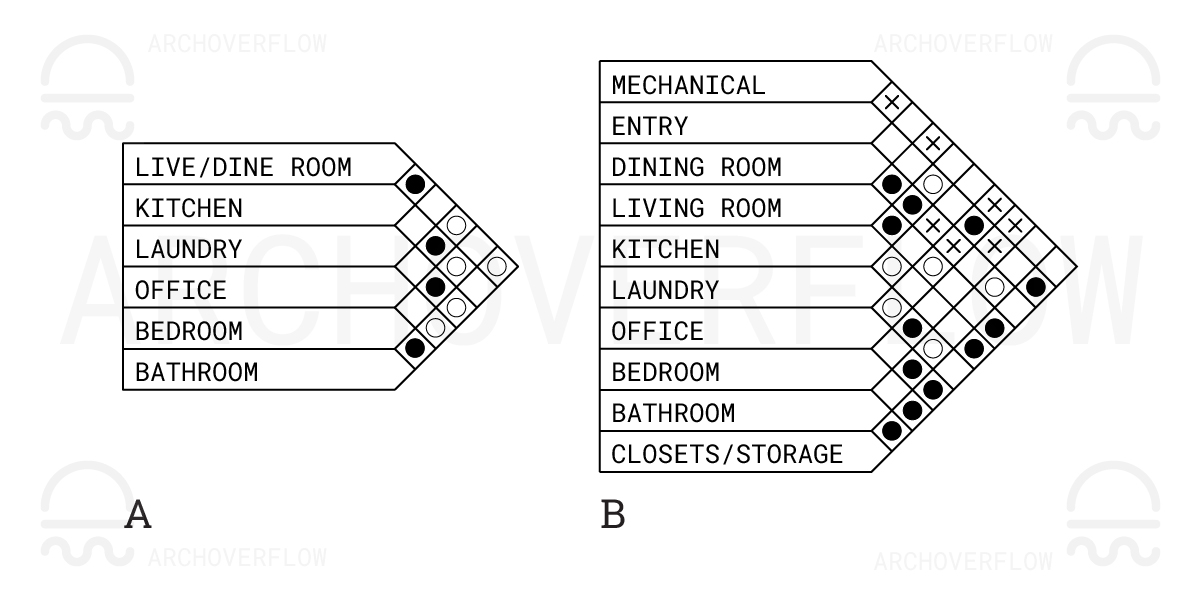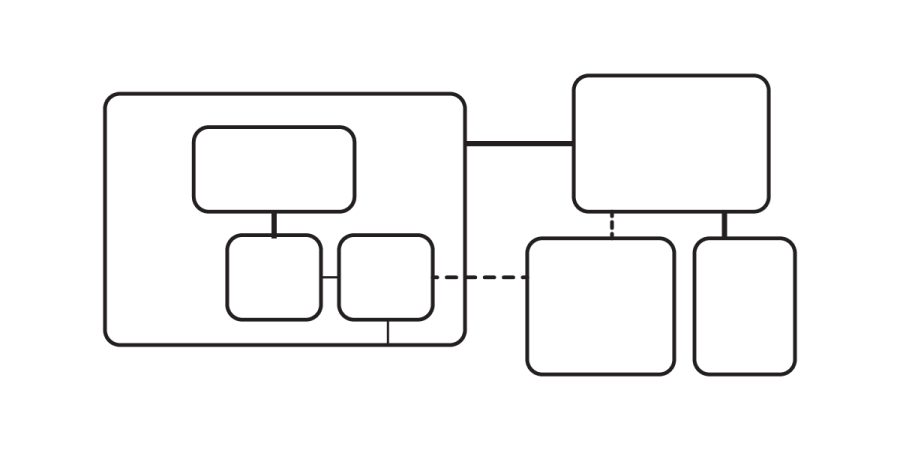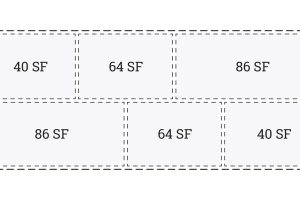Introduction
Architectural programming is the process of identifying and systematically organizing the functional, architectural, structural, mechanical, aesthetic, budget, and all other criteria relevant to the project that will guide the decision making in the design. Because of this, programming is important to discuss early on with the owner or stakeholders. Especially on larger projects, the owner and Architect should designate one responsible representative with complete authority to coordinate communications and make decisions, and the Architect needs to always document.
Most critical in practice is the last point, documentation. A paper trail needs to be made in order to keep everyone honest and to protect the decisions that have been made, in the case of addressing additional services or similar needs.
Checkpoints
At various checkpoints throughout the process, the information should be reviewed with the client for accuracy and to verify understanding of the big picture. At the end of the programming phase, the information should be reviewed and approved by the owner and architect and should become a part of the project record for use throughout the phases of design. Programming therefore ends with the statement of a problem.
Find the Problems
- The objective of a building program is to state the functions and purposes the building must serve.
- A functional building will have a well thought out and logical design, that has at its foundation good sensible programming.
Programming is the search for problems, while design is the search for solutions. Architects should not design in programming, and instead are searching for the problems that matter.
- The amount of problems found will vary dramatically by project. Some problems are so complex, they require expert technical advice, maybe in several areas to help solve the problem.
- Example: A small house will have easier problems than a large hospital
- One should not design a building while programming, or try to anticipate a design solution.
Researching
Identifying and understanding the problems takes some time. There are many different strategies to learn more about the programmed space, including:
- Research the typology, occupancy, etc
- Visit similar facilities
- Interviewing (focus group) the people who will be using the space
- Interviewing specialized consultants
In any case, the more you learn earlier on the programming process, the better. Many times the programming research phase will result in pages of documentation showing other comparative buildings and spaces that will be used to influence the design of the building throughout the process.
The Programming Process
The final objective of programming is to establish a full statement of the project requirements. A thorough understanding of the project’s needs will inevitably result in buildings which are more responsive to the requirements of the users. Therefore, the value of good programming is imperative to a successful project. It clarifies the intent of the owners, users, and architect before design even begins. It reduces the necessity for changes during final design, development of construction documents, and construction. It provides a basis for the resolution of differences of opinion, and it also serves as a reference upon which future changes can be based. The programming process will ensure less waste once the project is complete (unused rooms, oversized/undersized spaces, etc)
Blocking And Stacking: Process to build and stack different program elements. It’s most critical when considering site limitations and zoning.
- Eventually you may do a “test of concept”- this is the development of a simple mass and circulation design in relation to the site, in order to test the reasonableness of the program within itself and in relation to the site. This process is sometimes done during programming, but is not part of programming as it relates more to the architectural design.
Future Expansion And Precision Of Programming
No building, regardless of how carefully its intended uses may be researched, analyzed, and predicted will be used precisely as planned.
- This leads to the thought of providing for possible changes regardless of whether or not they are to be expected.
- Loose fit: Process of providing spaces that can be reconfigured, or adding 10-20% additional space to the requirements for expansion abilities.
- A modular layout is one of the most useful ways to plan and allow for future expansion and adaptability.
3 phases
Programming is generally completed in 3 phases.
- Broad objectives are stated
- Functional requirements are described by size and relationships
- Detailed requirements are noted
Programming Tools
Nowadays computer programs– mainly excel style– have taken over programming from an arithmetic point of view. These allow tabulation of areas, and can be complex to also include efficiency ratios as well as cost per area. However, graphic tools such as the affinity matrix prove valuable as well in helping lay out the spaces.

Affinity Matrix:
A graphic diagram, it helps illustrate relationships between spaces. In example A:
- Closed Dot: Requires direct adjacency
- Open Dot: Relationship but no direct adjacency required
- Nothing: No relationship exists.
Complexity
You can bake as much complexity into a diagram system like this as you want. This will be based on your parameters and legend, as well as how it’s set up and how deep you want to go.
For example, in diagram A, there is no entry listed, closets, and living/dining was combined together. The diagram could be showing just simple relationships on a surface level as shown here.
Diagram B
However, it could be expanded for sound/noise concern, viewpoints, etc. In diagram B, the theoretical project is expanded to show these closets and spaces, as well as an “X” to make sure these spaces are separated.
This diagram can tell us many things such as:
- The office needs a bathroom close to it, but so does the laundry and dining room
- Multiple closets may be needed.
- The entry should be close to the office, and have its own closet (for coats)
- Etc.






Leave a Reply
You must be logged in to post a comment.